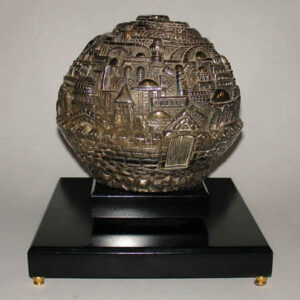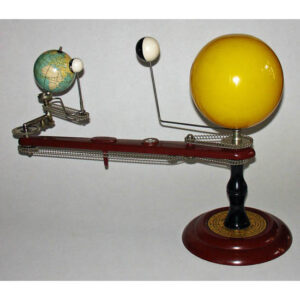Description
James Henry Daugherty was an American illustrator, best known for his children’s books. Daugherty spent most of his childhood in Washington, D.C. He studied at the Corcoran School of Art and the Pennsylvania Academy of Fine Arts, then spent two years in London as a student of Frank Brangwyn. He began publishing magazine illustrations in 1913. Early jobs also included four murals for Loew’s State Theatre in Cleveland and camouflaging ships. His first book-length illustration project was R.H. Horne’s King Penguin in 1925, followed by S.E. White’s Daniel Boone, Wilderness Scout (1926). His papers are in the University of Minnesota Libraries Children’s Literature Research Collections, with illustration materials for 30 books and manuscripts for five, spanning projects from 1926 to 1964. During his lifetime, Daugherty was honored for his contributions to children’s literature: Daniel Boone, a biography he both wrote and illustrated, won the 1940 Newbery Award, and his illustrations for Andy and the Lion (1939) and Gillespie and the Guards (1957) were runner-ups for the Caldecott Medal. Daugherty was in the news in 2006, when his dramatic 1935 mural, The Life and Times of General Israel Putnam of Connecticut, painted for the WPA and installed in a Greenwich, Connecticut, elementary school, was restored. The cleaning revealed imagery that some community members deemed too strong for children. Thus, the mural was transferred to the Reference Room Greenwich Public Library, where it remains today.
Full publication information: “Published & Copyrighted by the Historical Map Society, Times Building, New York.”
Condition: Generally very good with the usual overall light toning, wear, soft creases. Few small marginal tears professionally restored.
References:
Eyer, Jim. “James Henry Daugherty Papers.” University of Minnesota Libraries Children’s Literature Research Collections. 2008. http://special.lib.umn.edu/findaid/xml/CLRC-122.xml (11 February 2009).
Gilbert, Dorothy B., ed. Who’s Who in American Art. New York: American Federation of Arts and R.R. Bowker, 1959. p. 133.
Stowe, Stacey. “Mural’s Content May Stop Its Return to School.” New York Times. 6 June 2006. http://www.nytimes.com/2006/06/09/nyregion/09greenwich.html (11 February 2009).








